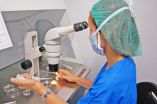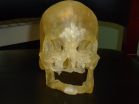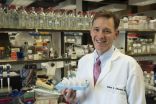(Press-News.org) The report was presented in Brussels today at an event held under the auspices of the Italian EU Presidency, gathering over sixty experts in the fields of nuclear physics and medical research.
This document provides an updated overview of how fundamental nuclear physics research has had and will continue to have an impact on developments in medicine.
While most nuclear physics phenomena are far beyond our daily experience there is a great variety of related techniques and applications such as those in medicine which have considerable impact on society. The development of nuclear physics since the first discovery of the atomic nucleus by Rutherford in the early 20th century has been intimately tied to the development of new detection techniques, accelerators and to theoretical and simulation frameworks. A large number of these have found, and will increasingly find, applications in daily life, well outside the realm of nuclear physics and indeed of physics itself.
Nuclear physics methods find increased applications within trans-disciplinary areas as diverse as energy, nuclear waste processing and transmutation, climate change containment, life sciences and cancer therapy, environment and space, security and monitoring, materials science, cultural heritage, arts and archaeology. In the past 20 years nuclear physics has progressed and new ideas have emerged leading to developments of technological interest. One important question in this connection is: how can nuclear physics techniques improve medical diagnostics and contribute to cancer therapy? The NuPECC report focusses on this specific question. It is important to stress that laboratories with focus on research in accelerator-based nuclear physics and on the related accelerator, detector, and isotope-production technology contribute indirectly or directly to developments in nuclear medicine. Not only can the best suited isotopes used for medical imaging and treatment be produced and developed with those accelerators, but the techniques used by nuclear physicists to peer "inside" the nucleus can be used to image and trace these agents inside the body to study human health and diseases. In a multidisciplinary vision, the knowledge of nuclear physics provides fundamental support to the requests of many specialist physicians, such as oncologists, radiologists, radiotherapists, and nuclear medicine specialists, looking to guarantee early detection of disease and to select the most appropriate therapeutic strategies.
Life sciences projects in nuclear physics laboratories are literally saving lives every day. This is commonly the case in European laboratories, which also contribute by providing considerable expertise and advice to other centres which are fully dedicated to nuclear medicine. The new infrastructures in Europe for the production and study of radioactive beams offer in particular, because of their cutting edge technological advances, interesting opportunities for new developments from which nuclear medicine will benefit. In applying nuclear physics in medicine, constructive interaction with physicians is central (what do physicians ask of nuclear physics?).
The answers to those questions are addressed in the NuPECC report, which is organised in three chapters: hadron therapy, medical imaging and radioisotope production. With this document the NuPECC committee intends to inform the scientific community beyond the nuclear physics community, funding agencies and policy makers in research of the latest developments in nuclear medicine driven by the technical efforts currently underway in nuclear physics facilities.
INFORMATION:
Note for Editors
NuPECC is an Expert Committee of the European Science Foundation (ESF). The aim of NuPECC is to strengthen collaboration in nuclear science by promoting nuclear physics, and its trans-disciplinary use and application, in collaborative ventures between European research groups, and particularly those from countries linked to the ESF. NuPECC encourages the optimal use of a network of complementary facilities across Europe, provides a forum for discussing the provision of future facilities and instrumentation, and advises and makes recommendations to the ESF and other bodies on the development, organisation, and support of European nuclear research, particularly on new projects. The Committee is supported by its subscribing institutions which are, in general, member organisations of the ESF involved in nuclear science and research or research facilities.
More at: http://www.nupecc.org
The report "Nuclear Physics for Medicine" is edited by: Faiçal Azaiez, Angela Bracco, Jan Dobeš, Ari Jokinen, Gabriele-Elisabeth Körner, Adam Maj, Alexander Murphy and Piet Van Duppen.
For further information on NuPECC contact:
Professor Angela Bracco
NuPECC Chair
Università degli Studi di Milano
Dipartimento di Fisica and INFN sez. Milano
Via Celoria 16 - 20133 Milano - Italy
Tel: +39 02 50317252
Email: bracco[at]mi.infn.it
Dr Gabriele-Elisabeth Körner
NuPECC Scientific Secretary
c/o Physik-Department E12
Technische Universität München
85748 Garching - Germany
Tel: +49 172 89 15 011 / +49 89 2891 2293
Email: sissy.koerner[at]ph.tum.de
The negative impact of contractions during in vitro fertilisation is a well-known fact. What was unknown until now was the effect it had on artificial insemination. A new study has discovered that it is the contrary to that seen in embryo transfer: there is an improved chance of getting pregnant.
Researchers from the Valencian Infertility Institute (IVI) have demonstrated that the number of contractions of the uterus per minute is a parameter associated with success in artificial insemination procedures.
The study, recently published in the journal 'Fertility & Sterility', ...
BERKELEY -- Greater income inequality is linked to more deaths among African Americans, but the effect is reversed among white Americans, who experienced fewer deaths, according to a new study by researchers at the University of California, Berkeley.
The study, published in the fall 2014 issue of the International Journal of Health Services, highlights stark racial differences in the effects of the widening gap between the rich and poor. The United States has one of the largest gaps between rich and poor among developed nations. According to a report from the nonpartisan ...
In a new register study in the scientific journal BMJ, researchers at Karolinska Institutet are able to dismiss previous claims that there is a link between the increased use of antibiotics in society and a coinciding rise in childhood asthma. The study includes half a million children and shows that exposure to antibiotics during pregnancy or early in life does not appear to increase the risk of asthma.
Several previous studies have shown that if the mother is given antibiotics during pregnancy or if a small child is given antibiotics in early life, the child has an ...
CHICAGO - Researchers are using computed tomography (CT) and 3-D printing technology to recreate life-size models of patients' heads to assist in face transplantation surgery, according to a study presented today at the annual meeting of the Radiological Society of North America (RSNA).
Physicians at Brigham and Women's Hospital in Boston performed the country's first full-face transplantation in 2011 and have subsequently completed four additional face transplants. The procedure is performed on patients who have lost some or all of their face as a result of injury or ...
CHICAGO - Hybrid imaging with positron emission tomography and computed tomography (PET/CT) in the pituitary region of the brain is a promising tool for differentiating military veterans with post-traumatic stress disorder (PTSD) from those with mild traumatic brain injury (MTBI), according to a new study presented at the annual meeting of the Radiological Society of North America (RSNA).
The findings also lend support to the theory that many veterans diagnosed with PTSD may actually have hormonal irregularities due to pituitary gland damage from blast injury.
MTBI ...
CHICAGO - Changes in brain connections visible on MRI could represent an imaging biomarker of Alzheimer's disease, according to a new study presented today at the annual meeting of the Radiological Society of North America (RSNA).
Alzheimer's disease is the most common form of dementia. As many as 5 million Americans are affected, a number expected to grow to 14 million by 2050, according to the Centers for Disease Control and Prevention. Preventive treatments may be most effective before Alzheimer's disease is diagnosed, such as when a person is suffering from mild ...
CHICAGO - Some high school football players exhibit measurable brain changes after a single season of play even in the absence of concussion, according to a study presented today at the annual meeting of the Radiological Society of North America (RSNA).
"This study adds to the growing body of evidence that a season of play in a contact sport can affect the brain in the absence of clinical findings," said Christopher T. Whitlow, M.D., Ph.D., M.H.A., associate professor of radiology at Wake Forest School of Medicine and radiologist at Wake Forest Baptist Medical Center ...
(PHILADELPHIA) - Although prostate cancer can be successfully treated in many men, when the disease metastasizes to the bone, it is eventually lethal. In a study published online December 1st in the journal Cancer Research, researchers show that the receptor CCR5 best known for its role in HIV therapy, may also be involved in driving the spread of prostate cancer to the bone.
"Because this work shows we can dramatically reduce metastasis in pre-clinical models, and because the drug is already FDA approved for HIV treatment- we may be able to test soon whether this drug ...
'Tis the season for toys. Children are writing lists full of them, and parents are standing in lines (or tapping on computers) trying to find them. Playing with toys this season or any other is an important way for children to develop, learn, and explore. But anyone planning to buy new toys, or anyone with toys already at home, should know that many toys pose an injury risk to children.
In a first-of-its-kind study, researchers in the Center for Injury Research and Policy at Nationwide Children's Hospital have found that an estimated 3,278,073 children were treated in ...
A breast cancer vaccine developed at Washington University School of Medicine in St. Louis is safe in patients with metastatic breast cancer, results of an early clinical trial indicate. Preliminary evidence also suggests that the vaccine primed the patients' immune systems to attack tumor cells and helped slow the cancer's progression.
The study appears Dec. 1 in Clinical Cancer Research.
The new vaccine causes the body's immune system to home in on a protein called mammaglobin-A, found almost exclusively in breast tissue. The protein's role in healthy tissue is unclear, ...





